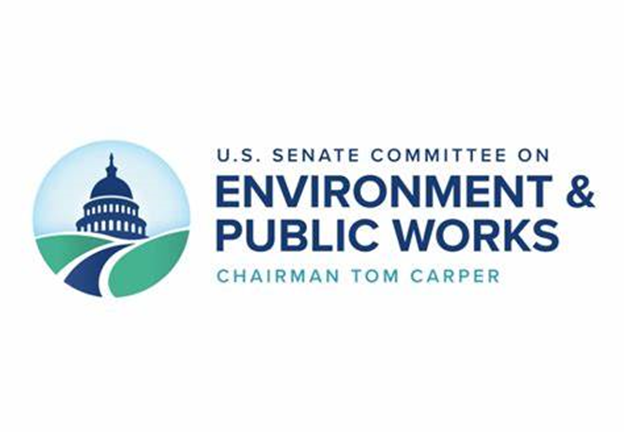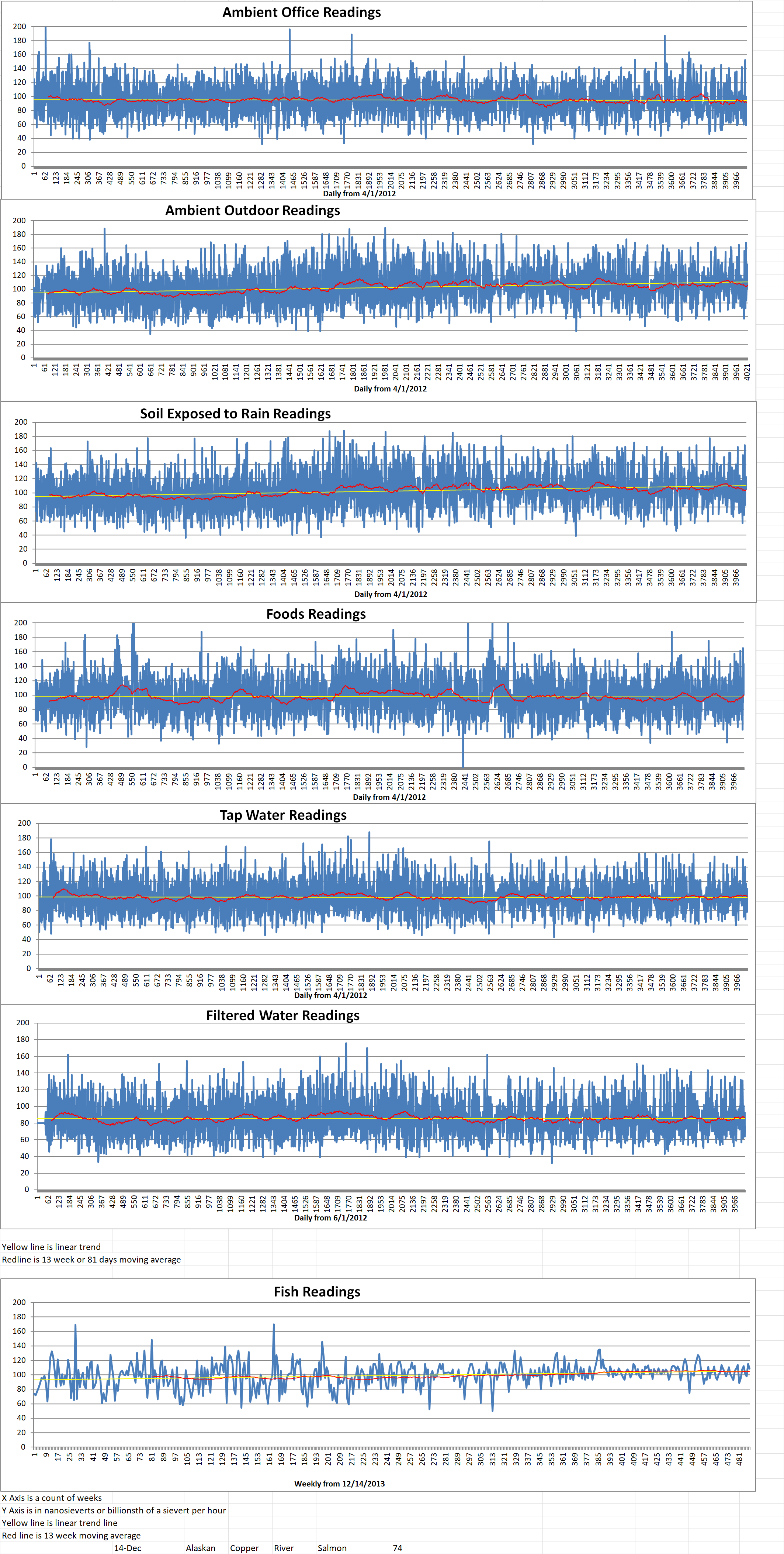Part 1 of 3 Parts
Congress has seen a serious increase of bipartisan nuclear legislation that would produce a massive build-out of reactors and fuel supplies over the next decade. Sponsors of bills and other supporters need to figure out how to get those bills through Congress in a tough legislative year. It won’t be as easy as it was in years past when a Democratic majority in both chambers allocated hundreds of millions of dollars for uranium mining. Congress also passed pivotal nuclear production tax credits as well as subsidies to keep struggling nuclear power plants online in landmark plans like the Inflation Reduction Act and bipartisan infrastructure law.
Today we have a split Congress with a razon-thin House Republican majority. This new political reality will make it difficult to sign any legislation into law. The nuclear industry is watching Congressional action closely. It is not satisfied with the tax breaks and funds they have received in recent years. Nuclear industry leaders and their allies say that Congress still needs to act on critical areas that are impeding nuclear buildout. These include limiting complex environmental regulations and securing a domestic fuel supply for future reactors.
Tom Carper (D-Del.) is the Chair of the Senate Environmental, Environment and Public Works Committee (EEPW). He said, “If you look at the IRA, your tax provisions here, if you look at other investments we made … we’ve provided great incentives. We want to make sure that we have the regulatory structure in place to help facilitate and move that forward safely.”
Nuclear energy was once viewed as too marred by a history of accidents and an intractable waste problem. It is now a common-ground energy sources between traditional Republican boosters and climate-minded Democrats. Many Democrats and environmentalists are increasingly convinced that the low-carbon energy is pivotal for the transition to a clear energy future. Even that momentum may not be sufficient. Congressional nuclear backers may have to be more creative to get their priorities into law.
None of the new nuclear bills currently circulating through Congress represents the bipartisan momentum behind the energy source better than the “Accelerating Deployment of Versatile Advanced Nuclear for Clean Energy (ADVANCE) Act,” from Carper and the top Republican on EEPW, Sen. Shelley Moore Capito of West Virginia. The S. 111 bill already has nineteen co-sponsors in the Senate split nearly evenly between Republicans and Democrats. The bill cleared committee in May on a sixteen to three vote. The legislation would cut down licensing fees for new reactors and provide additional funding to the Nuclear Regulatory Commission to hire additional staff.
John Kotek is the senior vice president of policy development and public affairs at the Nuclear Energy Institute. He said, “The ‘ADVANCE Act’ does some important things with respect to nuclear, export licensing activities, including establishment of an international nuclear reactor export innovation branch. Activities like that are really important.”
The bill’s sponsors have attracted bipartisan support. They know that it will likely need to hitch a ride on a larger legislative vehicle moving through Congress.
Please read Part 2 next
Blog
-

Nuclear Reactors 1246 – U.S. Congress Working On Bills To Support Expansion Of Nuclear Power Fleet – Part 1 of 3 Parts
-
Links for 11 Jul 2023
It wouldn’t be a surprise if North Korea conducts another nuclear test thehill.com
New Startup Looks To Blend AI And Nuclear Energy oilprice.com
Oxfordshire start-up hopes to transform nuclear fusion production bbc.com
Korean, Polish construction firms team up for nuclear projects world-nuclear-news.org
-

Nuclear Reactors 1245 – Framatome Is Developing Accident Tolerant Nuclear Fuel
Safety is one of the most important concerns with respect to nuclear power plants. A great deal depends on the safety features incorporated in the reactor designs. The design of the fuel pellets and rods for a nuclear reactor can also contribute to making them safer to operate.
Framatome has just signed a collaboration agreement to test its PROtect enhanced accident tolerant fuel (EATF) technology. Four lead fuel assemblies will be loaded into one of EDF’s French reactors by the end of 2023.
Accident tolerant fuel is a term used to describe new technologies that enhance the tolerance of light-water reactor fuel under severe accident conditions. It also offers improvements to reactor performance and economics. EATF fuels may incorporate the use of new materials and designs for cladding and fuel pellets.
Framatome EATF technology is supported by the France Relance recovery plan and the U.S. Department of Energy (DoE). The technology is based on advanced chromium coating applied to zirconium alloy cladding, and chromia-enhanced fuel pellets.
PROtech EATF is more tolerant to loss of active cooling in the reactor core for longer period because its reduced oxidation behavior increases “coping time” according to Framatome.
Framatome, EDF and French Alternative Energies and the Atomic Energy Commission (CEA) have collectively worked on the chromium coated cladding approach for almost ten years. Framatome’s development efforts led to the first lead fuel rods being inserted in a Swiss and U.S. reactor in 2019. This was followed by the first complete fuel assembly consisting of one hundred percent chromia-enhanced pellets and chromium-coated rods delivered and inserted in a U.S. nuclear power plant in the spring outage of 2021. Recently, the second eighteen-month fuel cycle in a U.S. commercial reactor was completed. Framatome’s PROtect EATF solutions have been implemented in four different nuclear power plants in the U.S. and one in Europe.
These lead fuel assemblies will be manufactured in Framatome French facilities. Framatome said that the results obtained during the EDF irradiation campaign will server to confirm the performance of this technology in a French reactor. It will support the final approval from the French nuclear safety regulators, the Autorité de Sûreté Nucléaire.
Lionel Gaiffe is the senior executive vice president of Framatome’s Fuel Business Unit. He said, “Our ambitious PROtect program puts us at the forefront of developing and implementing inherently safe fuel technologies for long-term plant operations. This agreement cements our position and confirms the confidence of our customers in our EATF technology, developed together with the knowledge, skills and expertise of our partners and leaders across the nuclear sector.”
Three companies including Framatome, GE Hitachi with GNF and Westinghouse are working with the DoE to develop new fuels under its Accident Tolerant Fuel Program.
In July of 2022, Westinghouse and EDF agreed to jointly explore the functionalities of Westinghouse’s EnCore ATF technology. Westinghouse stated that it will study the use of the fuel in an EDF reactor for potential deployment across the EDF nuclear fleet after 2030. Westinghouse said that it would deliver EnCore assemblies with lead test rods to EDF from its fuel fabrication facility in Västerås, Sweden, by 2023. -
Links for 10 Jul 2023
Russia says Ukraine’s assertions on blowing up nuclear station are lies news.yahoo.com
New Vogtle reactors bridge between old and new nuclear, says federal commissioner on visit augustachronicle.com
Russia Says F-16 Jets in Ukraine Will Be Seen as ‘Nuclear’ Threat themoscowtimes.com
IAEA ‘strongly encouraging’ options to allow cold shutdown of all Zaporizhzhia units world-nuclear-news.org
-
Links for 09 Jul 2023
Investment in fusion has reached USD6.21 billion, says FIA world-nuclear-news.org
Kim Jong Un vows to upgrade North Korea’s nuclear capability after missile test foxnews.com
Lavrov calls transfer of F-16 fighter jets to Ukraine ‘nuclear threat’ news.yahoo.com
Biden: China has warned Putin against using nuclear weapons news.yahoo.com
-
ADMIN NOTE
Due to multiple problems with hardware and software including serious system crash and damaged hard drive, I am unable to include radiation readings until September 8, 2023.
-
Nuclear News Roundup July 08, 2023
Years Later, Japan Is Still Recovering From the Tragedy That Shook Fukushima fordors.com
ITER component removed for repairs world-nuclear-news.org
Grouting operations resume at UK LLW repository site world-nuclear-news.org
GSE to assist in US control room upgrade project world-nuclear-news.org
-

Geiger Readings for July 08, 2023
Ambient office = 99 nanosieverts per hour
Ambient outside = 119 nanosieverts per hour
Soil exposed to rain water = 121 nanosieverts per hour
Seranos pepper from Central Market = 115 nanosieverts per hour
Tap water = 87 nanosieverts per hour
Filter water = 76 nanosieverts per hour
Dover Sole from Central = 98 nanosieverts per hour
-

Nuclear Reactors 1244 – Westinghouse Pursues License For eVinci Microreactor In Canada
Westinghouse Electric Company has submitted the first set of documents to the Canadian Nuclear Safety Commission (CNSC) required for the pre-licensing vendor design review (VDR) of its eVinci microreactor.
The CNSC offers the VDR as an optional service to provide an assessment of a nuclear power plant design based on a manufacturer’s reactor technology. It is not a regular part of the licensing process for a new nuclear power plant. However, it aims to verify the acceptability of a design with respect to Canadian nuclear regulatory requirement and expectations.
The VDR process consists of three phases. The first phase involves a pre-licensing assessment of compliance with regulatory requirements. The second phase is an assessment of any potential fundamental barriers to licensing. The third phase is a follow-up allowing the vendor to respond to findings from the second phase.
Westinghouse applied in February of 2018 to the CNSC for a VDR of the eVinci design. The VDR process was initiated following the signing of a service agreement between the company and the CNSC in September of 2022. Westinghouse is executing both the first and second phases of the VDR as a combined program.
Westinghouse has now provided four Phase 1 Focus Area sets of documents to the CNSC. More than forty submissions will be filed with the CNSC during Phase 1 and Phase 2 of the VDR process.
Westinghouse said, “The submissions will enable early identification and resolution of potential regulatory and technical issues as the eVinci technology advances through the design process.”
Westinghouse is planning to submit reports for joint review under the Memorandum of Cooperation between the CNSC and the U.S. Nuclear Regulatory Commission (NRC). The reports will focus on selected design aspects of the eVinci microreactor with the primary objective of establishing alignment of regulatory expectations as well as developing a common understanding of them.
Westinghouse submitted a pre-application regulatory engagement plan (REP) to the NRC for the microreactor in December of 2021 The submission will detail the planned pre-licensing application interactions with the regulator. An REP assists reactor developers’ early interactions with the NRC staff. It can reduce regulatory uncertainty and add predictability to licensing advanced technologies.
In February of 2023, Westinghouse filed a Notice of Intent to submit key licensing reports for eVinci to the NRC and the CNSC. The reports will be used for a joint review including a common set of requirements for the classification of systems, structures and components for the microreactor. This approach will allow deployment of a standard design in both the U.S. and Canada.
The eVinci microreactor is described as a “small battery” for decentralized generation markets. It will also be available for microgrids such as remote communities, remote industrial mines and critical infrastructure. The nominal five megawatt electrical heat pipe reactor has a heat capability of fourteen megawatts thermal. It features a design that Westinghouse says provides competitive and resilient power as well as superior reliability with minimal maintenance. The eVinci is small enough to allow standard transportation methods. This makes it perfectly suited for remote locations and rapid, on-site deployment. These features, Westinghouse says, make it a viable option for places such as mines and off-grid communities. -
Nuclear News Roundup July 07, 2023
Editorial: Sweden embraces nuclear energy thebrunwicknews.com
Cuba Rejects Entry of US Nuclear Submarine in Guantanamo telesurenglish.net
Indonesian diplomat says nuclear weapons put Asia at a ‘miscalculation away from apocalypse’ foxnews.com
Nuclear power too expensive and slow to be part of Australia’s plans to reach net zero, study finds theguardian.com
